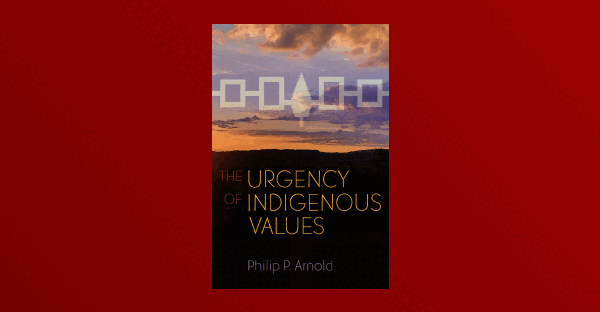
Syracuse University, a springtime view of Bird Library. Photo credit: SU Libraries.
Syracuse University is dedicated to expanding equitable access to scholarship. Through its participation in JSTOR’s Path to Open pilot program at the press and library levels, the university is supporting a model for open access (OA) publishing that helps university presses, libraries, and scholars alike.
Traditional OA models rely on author processing charges (APCs) and institutional subsidies, whereas Path to Open takes a different approach. Monographs begin with licensed access available to participating institutions and transition to full open access after three years, ensuring long-term availability while allowing publishers to recover costs.
Syracuse University Press and Syracuse University Libraries were early adopters of Path to Open in 2023, aligning with a broader mission to expand bibliodiversity—ensuring that a wide range of voices, disciplines, and perspectives are represented in scholarly publishing. Catherine Cocks, Director at Syracuse University Press, commented:
“It’s really important to be explicit about why bibliodiversity is important—because the world is a big and varied place, and we need publishers that are serving many different forms of scholarship, many different kinds of communities, and many different regional areas in many different languages.”
Sustaining scholarly publishing in the humanities
University presses, especially those publishing humanities and social sciences monographs, are struggling with financial pressures due to declining print sales and growing digital demand. Many open access initiatives prioritize Science, Technology, Engineering, and Math (STEM) fields, leaving humanities publishers searching for sustainable alternatives.
For Syracuse University Press, Path to Open offers a viable open access model for humanities scholarship. According to Catherine Cocks, “Open access has long been a challenge for small publishers like Syracuse University Press and other presses that I’ve worked at. The dominant models for open access really came out of STEM journal publishing, and they really were not well designed for monographs.”
Libraries also face challenges in promoting and funding open access initiatives. Path to Open presents a collaborative solution that aligns library investments with long-term accessibility goals. Scott Warren, Senior Associate Dean for Research Excellence at Syracuse University Libraries, explained their approach:
“We’re looking for initiatives that we think are going to pay off…Most open access programs align with our values, but we’re also looking for value—is it going to actually be a solid return on our investment? Do we think it’s more than just a one-off and will be sustainable and lead to more structural change. We are looking to impact our campus community as well as the global community.”
Expanding Indigenous scholarship through open access initiatives

For Philip P. Arnold, Professor of Religion and faculty member of Native American and Indigenous Studies at Syracuse University, Path to Open has the potential to ensure that valuable scholarship reaches communities who need it most.
His book, The Urgency of Indigenous Values, explores Indigenous environmental knowledge and its role in contemporary climate and social justice movements. Arnold believes these intransigent issues need a methodology that works across cultures—something they at the university have made a priority and continue to address.
Arnold sees open access as a way to expand the reach of humanities scholarship, breaking past traditional barriers to access. He continued:
“In the past, humanities publications were seen by very few people. [Typically,] your book is purchased by libraries in hard copy and then by a few individuals. University presses generally don’t have large runs of books. If they were available in open access format, that would change the whole research landscape.”
Since publication, Arnold’s book has sparked international interest. He explained, “An artist from Madrid is here on a Fulbright [grant or scholarship]. She’s a videographer and a well-known artist in Spain, and [one of the reasons] she won the Fulbright because she read my book and is interested in the Haudenosaunee influence on the women’s movement in Europe in the 17th and 18th centuries.She’s here for the year to make a film, and we’ve had many conversations about how, for example, Native American intellectuals in the 1600s engaged with Jesuits, who then wrote letters and reports back to France—reports that influenced the Enlightenment. Because the Haudenosaunee are matrilineal, their government structure follows matrilineal [traditions], led by women [as] clan mothers. This was inspiring to the women’s movement in Seneca Falls [in upstate New York] and to women in Europe. These are the really fascinating [connections].”
The role of libraries in open access

Syracuse University Libraries play an essential role in making open access sustainable, but awareness among faculty authors remains a challenge. Scott Warren explained:
“The details that distinguish different OA initiatives can sometimes be subtle. We understand them on the library side, and publishers do as well, but faculty don’t always have the full picture. One of the things we need to focus on is how to better help faculty authors find the model that is right for them. That begins by helping them understand the options that are already available.”
At the same time, libraries must ensure they are making strategic investments. Warren continued, “We’re putting all of these things out there and asking, how do we guide people to the right one? That remains an important question: how do people discover what’s available?”
Opportunities abound
Path to Open is opening new doors for the scholarly community. By making monographs freely available over time, the program fosters greater accessibility and long-term engagement with important research.
For authors like Arnold, participating in open access is an exciting step forward. He exclaimed:
“By next year, my book will be available free of charge—and that to me is quite exciting. I want to see what happens!”
Libraries play a significant role in supporting these initiatives while deepening faculty engagement. Warren emphasizes the power of investment in open scholarship:
“This is a smart investment. The rest of the world will get this content eventually—the fact that it’s open after three years makes it that much easier to invest in.”
With each new title added, Path to Open strengthens the foundation for a more accessible, dynamic, and globally connected research ecosystem.
The future of Path to Open
With a goal of transitioning Path to Open from a pilot to a model by April 2026, JSTOR relies on the partnerships with universities, like Syracuse, who participate in the pilot program for feedback and collaboration to develop a model that works for everyone. Syracuse University continues to champion bibliodiversity and equitable access. Ensuring that small and medium university presses remain part of the initiative is essential. Catherine Cocks emphasized:
“Small presses are very vulnerable right now. There’s a lot going on…Path to Open allows us to sustain our publishing efforts while ensuring that important scholarship reaches the widest possible audience.”
For libraries, strengthening open access infrastructure is key to making Path to Open a lasting model rather than a short-term pilot.
A recent usage study conducted by JSTOR found that 100% of titles released at launch were used by participating institutions—demonstrating the strong curation and bibliodiversity of the titles selected for Path to Open. In contrast, among open access books added during the same timeframe without curation, 8% had zero usage, further emphasizing that Path to Open is a high-impact choice for institutions.
The power of community-driven open access
Syracuse University’s participation in Path to Open highlights the potential of collaborative open access models. The program benefits:
- University presses by providing a stable, collective funding model.
- Faculty authors by increasing readership and engagement.
- Libraries by aligning investments with sustainable open access strategies.
Advice for libraries
As Syracuse University continues its participation in Path to Open, those directly involved offer advice to libraries, publishers, and faculty considering the program. Scott Warren highlighted the importance of engaging with those already involved: “Talk to the libraries that have participated in Path to Open, the university presses that have chosen to put their books into it, the faculty authors whose books have been selected.”
Warren also advised libraries to focus on the present rather than searching for a permanent solution. “Sometimes I think it’s easy to lose sight of what we can do now. We can err by placing too much emphasis and worry on whether what we might do will be perfect and solve everything for everyone—I don’t know if what we do now will be fully viable 20 years on—but I’m going to do what I can to make some positive change while I have the opportunity right now.”
Advice for university presses
Catherine Cocks highlighted the importance of understanding how Path to Open fits a press’s needs: “I would encourage [other presses] to look at the title submission criteria. There are some small university presses that might struggle to have enough titles in those specific categories because their publishing programs focus a great deal on literature or regional topics that wouldn’t be as well suited to Path to Open.”
She also stressed the significance of workflow management: “It’s mostly about ensuring that you’ve set up the workflow correctly on your end so that you can manage things like getting other permissions once titles have been accepted, handling third-party permission issues, metadata, things like that.”
Finally, she noted the need for broader participation while keeping the program mission-driven: “I’m looking forward to one of the things the [Path to Open Community Advisory Committee] is working on this year—developing criteria for scholarly presses that aren’t university presses in the hopes that we’ll be able to broaden the pool of publishers able to participate, without running into the risk…of getting co-opted by large commercial entities, which would undermine, I think, the mission-driven nature of the program.”
Advice for faculty
Philip P. Arnold encouraged faculty to recognize the broader impact of open access: “There are a lot of very important books coming out. I could just list probably half a dozen right now, and these are largely trade books, but if they were more available in an open access forum, our students could get at them.”
Join the movement
Released in 2023, and guided by a community advisory committee, Path to Open is already gaining momentum—with over 240 libraries and nearly 50 publishers participating, and more than 425 live titles covering 40+ disciplines, with 300 additional titles added each year. Designed to increase access to diverse ideas, support nonprofit university presses, invest in authors, and help libraries acquire affordable, high-quality frontlist titles, Path to Open enables sustainable open access publishing and connects readers and authors around the world.
Be part of the community shaping the future–join Syracuse and 240+ libraries investing in open access.